
More about the Meru Range, including a video of Conrad Anker talking us through the range, in this
UKC Gear News Item.
I'm sure I'm the norm rather than the exception when I say I've never had a full 'suit' of gear all from the same manufacturer. Like most people I buy kit from a number of companies, all designed with a different set of materials, sizes, shapes and design philosophies, so I was interested to see how gear designed as one 'set' would perform.
The Meru Range features a full Gore-Tex shell set of jacket and trousers, a mid layer stretch fleece and a hooded down jacket, all designed to be compatible with each other. The designers of the kit have clearly thought it all through very thoroughly, and there are some pretty interesting innovations and features on all four items.
I've used the kit together, and also taken individual pieces out when they suited what I was doing for the day, and to see how they work on their own, given that most people will probably not buy the whole 'suit'. I've also lent the kit to climbing partners when we've been out the mountains, in order to get a second opinion on a few features.
Meru Gore Jacket £350
This jacket in pretty much as light as a tough, three layer waterproof can be - it's made from Gore's new Active Shell fabric. (See this UKC News Item for more about Active Shell).
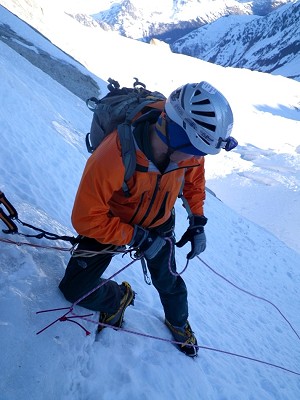
The pockets are intelligently designed to be big but clear of a harness, so they start high up the chest and only extend to roughly the bottom of your ribs. This meant that although it was easy to store things, the contents of the pockets never got stuck under my harness, but at the same time you don't lose the bottom half of the pockets as a result of having a harness on.
The pockets also contain the cord to tighten the waistband by the way – I'd been using the jacket for a week before I worked that out! Actually, one quibble I had was that waistband didn't do up quite tightly enough, but then again I'm pretty skinny, and the feature of having the tightening system in the pockets instead of hanging round your waist, catching on your karabiners, is excellent.
The other feature that stood out was the huge hood and structured brim. The hood doesn't so much cover a helmet as engulf it, and when you don't have a helmet on, the hood can be tightened. That said, it definitely fits a helmet better, and I found that when I didn't have a lid on the hood was a bit too loose, and could be blown off in high winds.
The final main feature is the 'tough grip zones' on the shoulders and hips, which are basically sticky patches designed to keep a rucksack in place. I thought that the theory behind these was sound, but in practise I found that I was used to my pack moving around, particularly when climbing chimneys or anything else that requires a bit of squirming, and didn't like not being able to shift it to one side when necessary. The grip zones were good for skiing though, as they stopped your pack shifting around with every turn.
"...a surprisingly versatile bit of kit, and the first hard shell jacket that I've worn for cragging as well as mountain stuff..."
One downside of the Meru jacket was the fit, which I found was pretty baggy. I'm pretty slim but even so I felt that the chest area was disproportionally big for the size of the jacket.
Meru Gore Bib £330
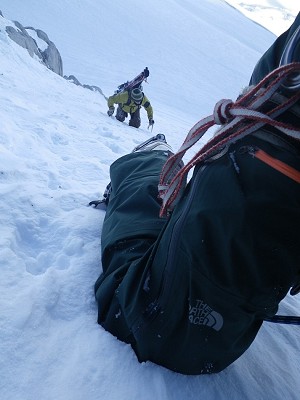
Firstly, the zip system is superb. There is actually only one zip, which extends from the outside of the ankles and all the way up across your backside, but there are 4 zippers, so there are infinite ways of opening the zips for different purposes be it taking boots off and going to the toilet. (Without wishing to go into detail, I went to the toilet on a ledge, wearing a harness and these trousers, and it went very smoothly – which it pretty much has to if it isn't going to ruin your day).
The built-in gaiters work well too, and are big enough to fit over any of my footwear but snug enough to do their job. The 'Keprotec' kickpatches are also excellent, and make much more of a difference to wear and tear than I first thought they would. I find that on an alpine route you cover so much varied terrain that it is almost impossible not to occasionally put a crampon point into your trousers, and I initially thought that the kickpatches would be little more than a gimmick but they are actually pretty tough.
Comfort is improved by having the Gore-Tex extend only as far as the waist, and the part of the dungarees that cover the belly and lower back is soft, stretch fabric, meaning that your midrift stays warm but not sweaty. Finally, the thigh pocket is a really neat idea, and although small, it is perfect for something small but which needs to be easily accessible such as a phone or camera.
"Without wishing to go into detail, I went to the toilet on a ledge, wearing a harness and these trousers, and it went very smoothly – which it pretty much has to if it isn't going to ruin your day..."
Overall I thought that the Meru bibs were excellent – breathable, comfortable and well thought out.
Radish Mid Layer Jacket £155
By far the most versatile piece of kit in this set is the Radish Mid Layer, which is a lightweight stretch fleece, but I found that it also worked pretty well as a soft shell outer layer. The jacket is made up of a pretty complicated range of fabrics, starting with a hard face fleece and a micro brushed interior, and finished off some 'FlashDry' technology, which does what it says on the tin. That all sounds pretty complicated to me, but I found that in practise it meant that the jacket was extremely warm for it's thickness, comfortable and really stretchy.
Once again there are some really well thought out features. The hood is the first thing that springs to mind, as having a fleece with a hood made this a really good choice for chilly cragging, as you could climb with it down, and then pull it up for belaying – much simpler than putting on and taking off a beanie under a helmet. The hood also meant that when I was walking I could use the jacket as a lightweight, breathable shell and pull up the hood when I got slightly cold or the wind picked up.
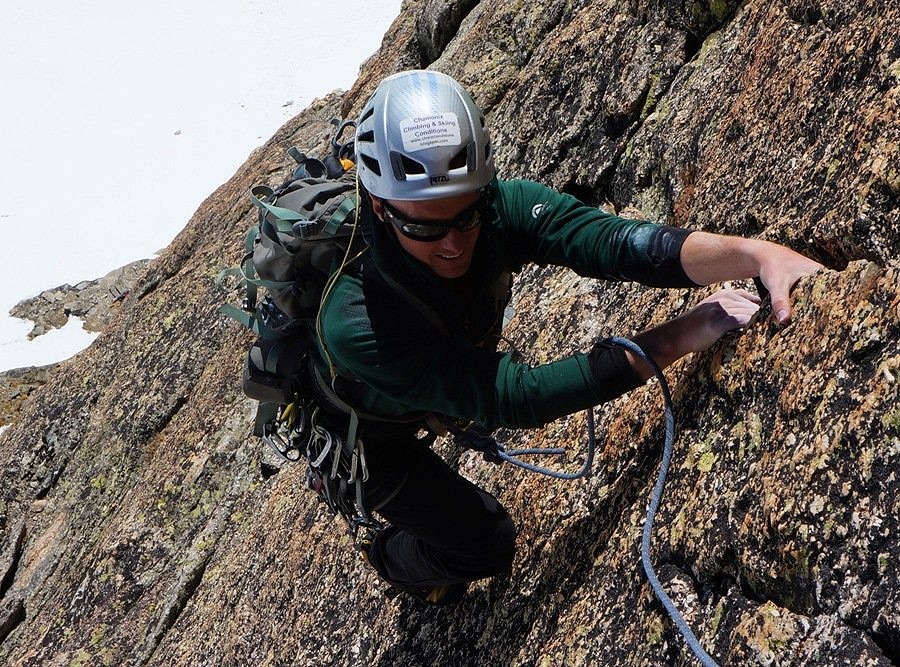
The jacket also suits climbing because the cuffs are about an inch of thin, tight lycra which keeps your hands free from obstruction, and means that the sleeves can be easily pulled up your forearm and that they stay there without having to be continually rolled up. They also have the little thumb loop thing, but does anyone use that?! The reinforced shoulders and hips also make sense, as these are always the areas that wear out fastest, and the chest pocket is good too, and big enough for most phones and cameras and also ideal for storing a map or photocopy of a guidebook page.
"Of all the kit, I thought that the Radish was the piece that would see the most all year round use..."
Of all the kit, I thought that the Radish was the piece that would see the most all year round use, from a mid layer in winter through to a shell for mountaineering and summer alpinism, or some emergency warmth on a multi pitch rock route. A truly superb piece of kit.
Shaffle Down Jacket £450
The final piece in the jigsaw is the Shaffle down jacket, which is not quite as lightweight-minded as the Meru Gore-Tex gear, but more of a big, go anywhere piece of kit. That said, it is still light enough that I took it everywhere from winter alpine routes through to multi day ski tours, and found it marginally heavier than my normal insulation, but much, much warmer. It is overkill for most summer situations, but good for virtually everything else.
"I found in practise that this worked really well, and the large concentration of down around the chest and kidneys was really noticeable..."
The jacket has been designed so that down is kept in all the right places, and reduced in areas such as the forearms where, most of the time, ease of movement is more important than warmth (The North Face refer to this as body-mapped warmth, which is as good a description as I can come up with). I found in practise that this worked really well, and the large concentration of down around the chest and kidneys was really noticeable, whilst the thinner parts also meant that the jacket doesn't feel clumsy when doing anything requiring dexterity such as using a stove. The pre-cinched hood and cuffs work well too.
As with the Meru Gore-Tex jacket, it also has intelligently designed pockets which are still accessible with a harness on. In addition there are 2 enormous mesh pockets on the inside, designed to take water bottles (and there's plenty of room for at least a litre in each pocket). The final positive is that the jacket really compresses well and is pretty tough so it can be shoved into a rucksack quickly, and take up minimal space. One small quibble is that, like the Gore-Tex jacket, the waistband didn't do up tightly enough for my liking, so if it was windy I found that I'd sometimes get cold air coming up from my waist.
One thing that stood out about the Shaffle jacket was that it had been designed by people who actually use the kit, and know what makes a warm, functional jacket which is light and small enough to be carried all day.
"...It is obvious as soon as you start using this kit that some serious thought has gone into it, and that there is a huge amount of input from real climbers..."
Overall
It is obvious as soon as you start using this kit that some serious thought has gone into it, and that there is a huge amount of input from real climbers. As a complete set I think that the gear works well, but any 1 piece of kit in this range will fit well into most people's clothing systems. In summary, the kit is well thought out and though not every feature on every piece suited me, the overall quality and practicality is excellent.
More Photos
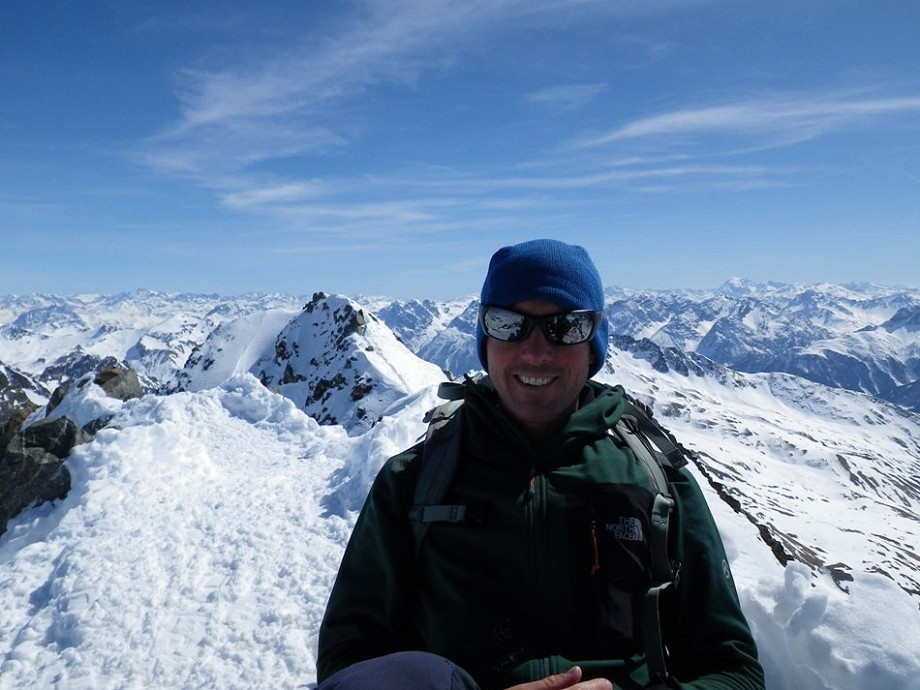
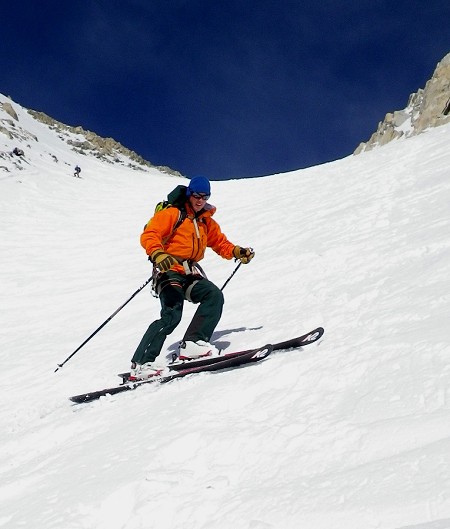
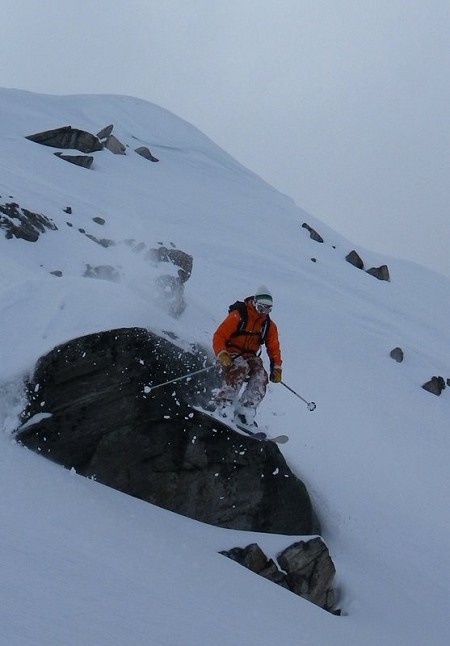
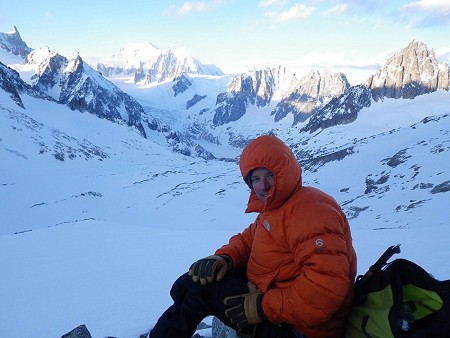
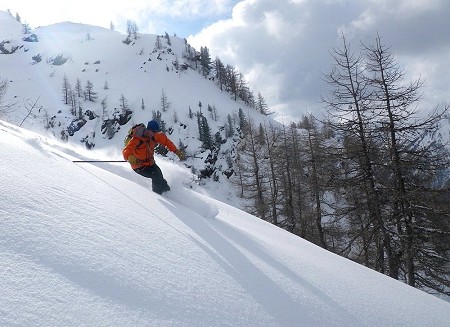
About Charlie Boscoe
Charlie Boscoe is a skier and climber based in Chamonix, France. In between running his successful blog on Chamonix climbing conditions he also heads up expeditions and has recently lead a group up Kilimanjaro, Africa's highest mountain. You could say he has started the 'Seven Summits'. He likes Rugby, but we don't hold that against him too much.
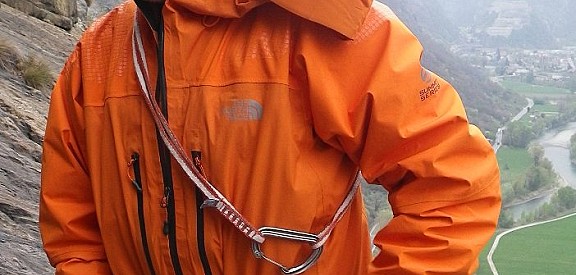
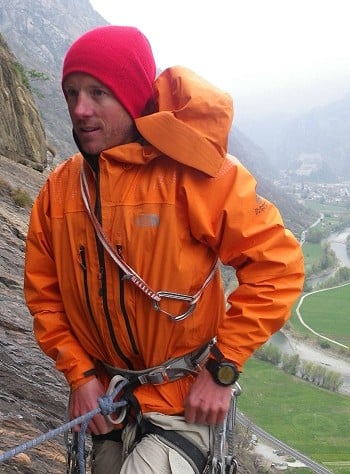
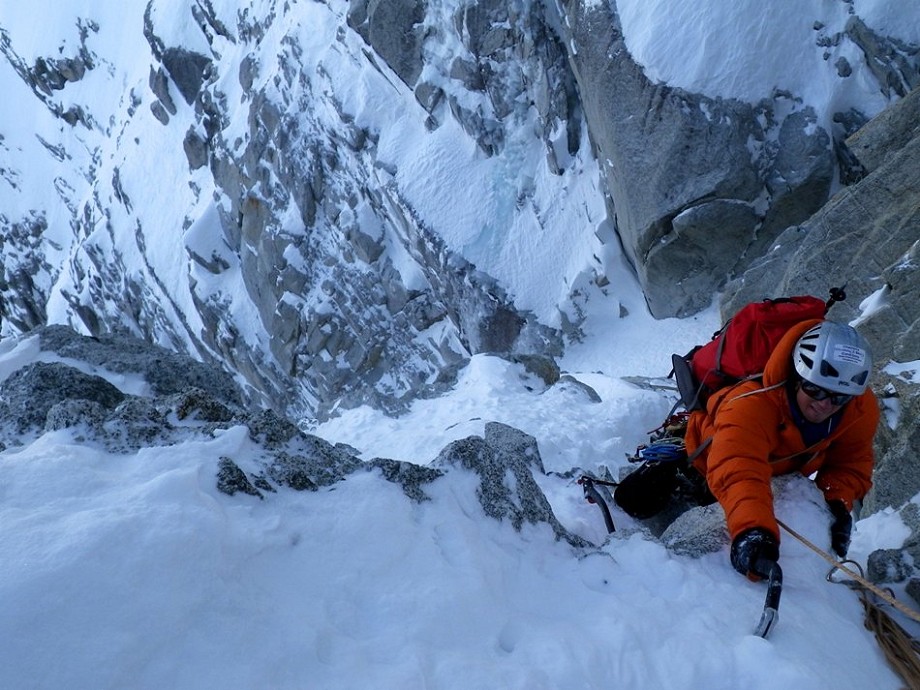
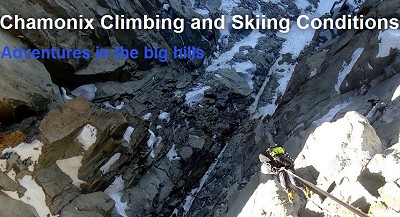
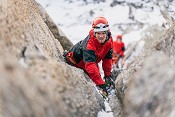
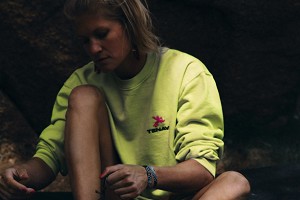
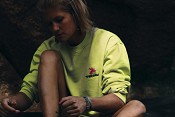
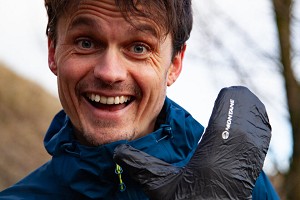



Comments